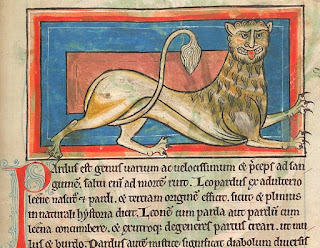The King's Touch, or Royal Touch, was the practice of laying on of hands by English and French monarchs that was believed to cure diseases, particularly the King's Evil, scrofula. Hippocrates thought scrofula was a disproportionate accumulation of phlegm.
Scrofula, a disease of the lymph nodes, is now called mycobacterial cervical lymphadenitis, and is associated with tuberculosis. It usually manifests as a painless swelling in the lymph nodes of the neck caused by infection. It almost disappeared in the second half of the 20th century, but the appearance of HIV/AIDS has caused a small resurgence.
Where did the Royal Touch start? A 16th-century physician thought it began with Clovis I (reigned 481 - 511) after he accepted Christianity. Many other origins are offered. King Philip I of France (1052 - 1108) was perhaps the first time a king's touch was requested to heal a stubborn disease, so the French say. King Henry I of England (1068 - 1135) was appealed to for the same reason, although some scholars believe Edward the Confessor (reigned until 1066) was the first. The French denied this, and claimed that it started with Henry in England only because he was imitating Philip. What we can say is that records under Edward I show the practice of a penny given to sufferers afterward was established by 1276, two years after Edward's arrival back in England as king. Some say this means it was probably introduced by Edward's father, the pious Henry III, who was also a huge fan of Edward the Confessor and might have patterned his behavior after that monarch and therefore—but let's just stop there because there's too much speculation to reconcile all the conflicting theories. The record of tokens handed out suggests that Edward "touched" about a thousand people a year.
Scrofula became known as the "King's Evil" because an appeal to the king was considered the best recourse. John Gaddesden (1280 - 1361) recommends it as treatment for scrofula and other skin diseases. Eventually, a special gold-plated coin would be given by the king to the sufferer to be worn around the neck to ward off the disease. The truth is, the disease rarely was associated with death, and often went into remission on its own, supporting the notion that the king's touch cured the patient.
The Royal Touch persisted into the Renaissance, even though there was plenty of evidence that it did not inevitably lead to a cure. The formula in France added the line Le roi te touche, Dieu te guérisse ("The King touches you, may God heal you"), taking the burden of healing off the king's shoulders (or hands) and placing the possible healing on God. Louis XIV of France touched 1600 people on Easter 1680. Voltaire wrote that a mistress of Louis XIV died of scrofula despite "being very well touched by the king." Louis XV stopped the practice by not calling sufferers to be touched at Easter 1739. Louis XVI touched 2400 at his coronation in 1775, and Charles X touched 121 at his coronation in 1825, but there are no records of the Royal Touch being used after that date.
But where does the word scrofula come from? That's a slightly trickier question that will lead us into sympathetic magic and the Doctrine of Signatures. That's for another day.














